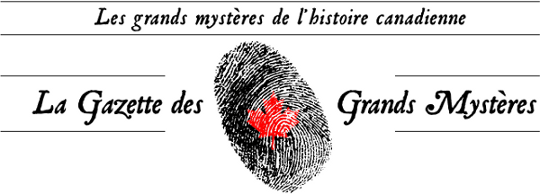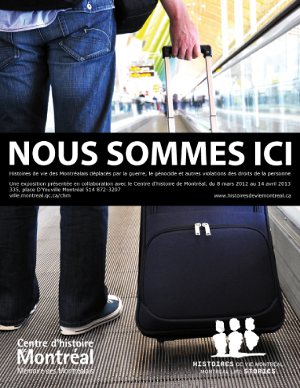Great Unsolved Mysteries in Canadian History:
|
|
GreetingsGreetings from the team at the Great Unsolved Mysteries in Canadian History (GUMICH) project, based at the University of Victoria. Welcome to the latest edition of the new GUMICH Gazette, a thrice-yearly newsletter to help keep educators up to date on news and tips for teaching with historical mysteries. 
Free Canadian Mysteries Posters Online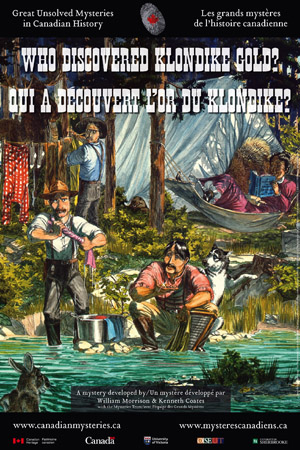
Did you know that we’ve created a colourful poster for each of the Mysteries featured on our website? Great for your classroom! You can download and print the posters for free from our Posters page. Tom Thomson Song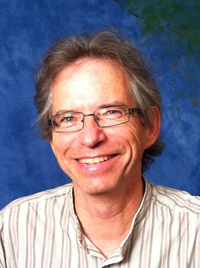 Alex Sinclair Resources for Aboriginal History Month in June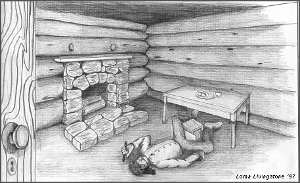
Are you looking for learning resources related to the history of Aboriginal peoples and race relations in Canada? Check out the classroom-ready MysteryQuests for Who Killed William Robinson? Race, Justice & Settling the Land. An Aboriginal man was hanged after three Black men were murdered on Salt Spring Island in BC. But was he guilty? There are three short, focused, single-lesson plans for the Robinson Mystery. Each of these MysteryQuests includes an Introduction, Task, Procedures, Evaluation, Support Materials (such as activity sheets in PDF format), Extension Activities, and Teacher’s Notes. The quests for Robinson are critical thinking challenges designed for students ages 14-16: Who Killed William Robinson? Race, Justice and Settling the Land
Teaching Tools: Teacher’s Guide for Donnelly Mystery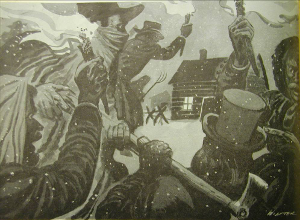
Have you used our free, online Teachers’ Guides? Just sign up here to access the guides for all twelve of the Mysteries on our website. For the mystery Heaven & Hell on Earth: The Massacre of the “Black” Donnellys, we’ve created a 65-page guide. This includes nine lessons, including topics such as Determining the Facts of the Case, Learning to Read Historical Documents, Writing the News, Did Vigilante “Justice” or the Rule of Law govern Biddulph Township,? Exploring Personal Experience in History. You’ll find everything you need to use these lessons in your classroom, from curriculum links, instructional outcomes, time frames, and unit overviews to primary and secondary documents, activity descriptions and printable briefing and activity sheets. Featured Primary SourceFrom the mystery Jerome: The Mystery Man of Baie Sainte-Marie 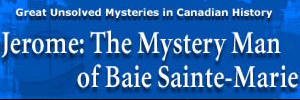
Description of a cell where Jerome was kept 
On September 8th, 1863 a stranger was found on the beach of Sandy Cove in Nova Scotia, alive but with no legs and unable to speak. This “mystery man” was later known as Jerome. Who was he and what happened to him? To check out clues, your students can listen to several interviews with residents of the area - including this one conducted in Acadian French. We also provide transcripts in both English and French. Featured ImageArchaeologist Birgitta Wallace collected a variety of useful maps for the Where is Vinland? Mystery that she developed. Some are historical maps, while others such as this depiction of Viking Expansion were commissioned for the project. You’ll find many more maps for this mystery in the archives section. 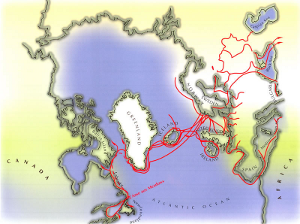
Vis-à-Vis Graphics Learn more about Where is Vinland? Partner News from Concordia UniversityBy Lisa Moore The first academic semester of 2012 was an exciting and eventful one at Concordia University in Montreal. Most notably, the recent student strike has consumed campus life as the on-going debate over the Quebec government’s decision to raise tuition fees by 75% over the next five years continues. Concordia students in favour of the strike, along with their peers from other Quebec universities and CEGEPs, have demonstrated an overwhelming amount of dedication and perseverance in their struggle to stop the tuition increases, participating in a variety of strike activities, such as marches, demonstrations, and teach-ins, to offset the government’s plans. A significant number of Concordia’s history students are also involved, including active strike participant and organizer Serge Del Grosso, an undergraduate studying History and Urban Studies. Serge emphasizes the particular relevance of taking part in a strike, especially as a history student, pointing out that through his studies, he has come to understand “the change that popular social justice movements historically have been able to catalyze.” However, a significant portion of Concordia’s student population does not share this view. For instance, while many history students have actively supported the strike, others have opposed it or admitted their indifference. The division quite literally manifested itself after the graduate students chose to support the strike while the undergraduates (65% of those who attended the March 15th general assembly) voted not to participate. Assemblies, like the one coordinated by the history undergraduates, have also been organized by the student associations of most programs in order to ensure that everyone has a forum in which to voice their opinions. Thus, although the province-wide student strike has proven to be a contentious debate on Concordia’s campuses, what remains important is that all Concordia students have been able to exercise their democratic right to choose and have been given the opportunity to make their voices heard. 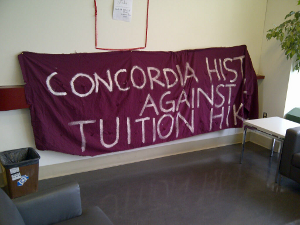
While the student strike may have taken a leading role in the Concordia History Department’s recent affairs, it has not overshadowed the exciting events that illustrate the talent, creativity and innovation of our faculty and students. Recently, SHAC, the Students of History at Concordia, invited Visiting Fellow Tania Martin of Université Laval’s School of Architecture to give a special lecture as part of their third speaker series. Dr. Martin, who holds a bachelor and master’s degree in architecture from the University of Toronto and McGill respectively, completed her PhD in architectural history at the University of California at Berkeley. At Université Laval, where she is an associate professor, Dr. Martin presently holds the Canada Research Chair in Built Religious Heritage and is also a member of the Historic Sites and Monuments Board of Canada. Her research focuses on the architecture of the Grey Nuns and the Sisters of Providence and will be published in a book she is writing. On March 28th, Dr. Martin gave an engaging lecture entitled “Combing the Built Environment, a 4D archive,” which focused on how the monuments and structures that served the Grey Nuns and the Sisters of Providence reveal the ways in which the sisters adapted their built environment to match their goals of providing catholic charity and engaging in religious community life. The lecture, which was open to all history students, marked the successful conclusion of SHAC’s last speaker series of the semester. 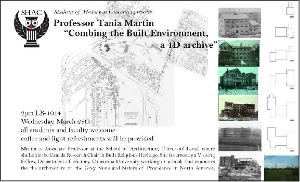
In March, the graduate students, under the direction of the Graduate History Students’ Association, once again demonstrated their imagination and initiative when they organized the 17th Annual History in the Making Conference. This year’s conference, titled “Shattered Spaces: Piecing Together Narratives of Crisis and Change”, featured an engaging series of lectures that highlighted the extraordinary ability of societies throughout history to endure distressing crises and adapt to destabilizing change. The graduate students expertly chose a varied selection of papers, inviting twenty-seven panelists from universities across Canada and the United States to present their research. The thought-provoking lectures covered an impressive array of historical subjects that emphasized the conference’s goal: to illustrate the ways in which humanity has not only survived catastrophe but also has attempted to rebuild broken spaces and identities, especially through the medium of collective memory. Noted among the lecturers were key-note speakers Dr. Henry Greenspan of the University of Michigan, Ann Arbor, whose extensive research on the Holocaust and its survivors has earned him considerable respect and prestige within his field, as well as Dr. Sean Mills, a Canadian and Quebec historian whose impressive research on the social movements of the sixties, including the prize-winning The Empire Within: Postcolonial Thought and Political Activism in Sixties Montreal, has earned him critical acclaim. As a result of the impressive turnout of faculty and students, and more importantly, the remarkable quality of the featured papers, the 17th Annual History in the Making Conference was an outstanding success. 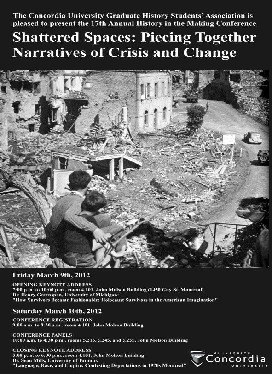
It is perhaps not a coincidence that the graduate students of Concordia’s History Department chose to organize a conference that focused on the human ability to survive crisis and change. The History Department’s Centre for Oral History and Digital Storytelling has spent the past five years investigating this very subject through its project, Montreal Life Stories, known more formally as Life Stories of Montrealers Displaced by War, Genocide, and other Human Rights Violations. Funded by SSHRC’s Community-University Research Alliance (CURA) program and co-directed by Concordia University history professors Steven High and Frank Chalk, Montreal Life Stories has conducted and compiled oral-history interviews with Montreal immigrants who suffered through violent atrocities and forced displacement, such as the Holocaust, the Rwandan genocide, the Khmer Rouge genocide in Cambodia, and the violence committed by the Duvalier regime in Haiti. Montreal Life Stories is especially innovative because it uses digital media and computer technology to archive each of the five hundred interviews it has conducted. What is most impressive is that the digital database will be accessible to students, who can not only view the footage but also edit the videos they would like to use in their own research projects. Life Stories, which in itself has proven to be an overwhelming success, has recently been converted into a riveting exhibition. With the help of the Centre d’histoire de Montréal, Montreal Life Stories has been put on display in an exhibition entitled We Are Here. Profoundly moving and deeply engaging, the exhibition takes its visitors on a journey through the struggles of immigrants making their way from dangerous environments and destroyed homes to the foreign and perhaps intimidating city of Montreal, where adapting to a new life while still attempting to hold on to one’s previous identity proves to be a challenging task. The exhibition combines footage from the Life Stories’ extensive selection of interviews with personal items from homes and families long lost, as well as written reflections and drawings created during the project’s workshops. In doing so, it provides visitors with a vivid perception of what it means to suffer through human rights atrocities, to be displaced, to struggle to preserve one’s identity, and finally, and perhaps most importantly, to preserve these experiences within a collective memory that can serve to educate future generations. 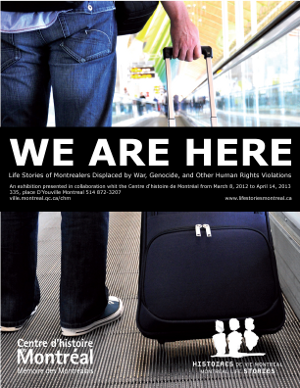
Lisa Moore recently completed her undergraduate degree in history at Concordia University. She will enter the MA program in the fall. |
Contact Us:admin@canadianmysteries.ca |
Subscribe to the GUMICH Gazette.
Please remove me from future GUMICH Gazette mailings.
